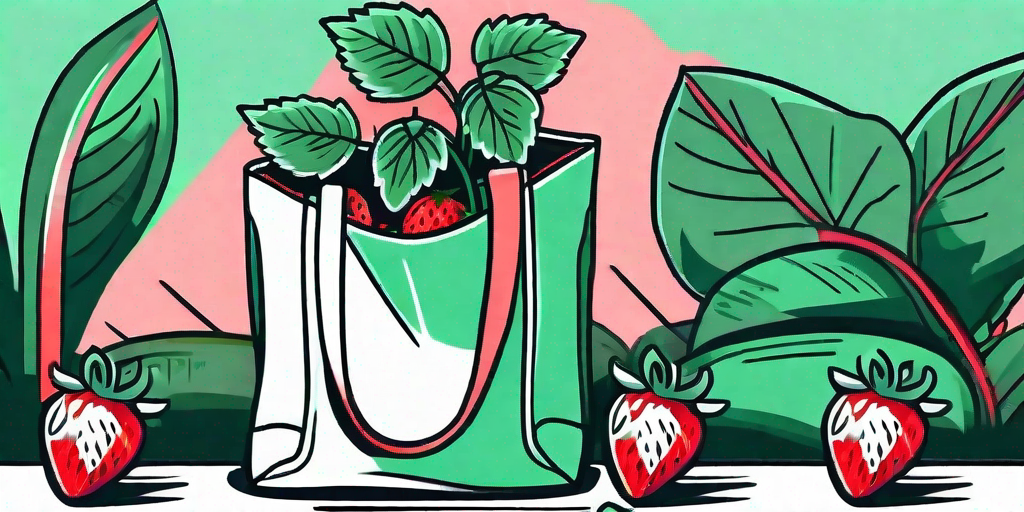
Strawberries, those delightful little red gems, are a favorite among gardeners and dessert enthusiasts alike. But, have you ever wondered what it takes to grow the juiciest, most succulent strawberries? Well, buckle up, because we're about to embark on a journey into the world of strawberry cultivation that will leave you with the knowledge and tools to grow your own lush harvests. And the secret? It's all in the fertilizer, my friend.
The Strawberry Basics
Before we dive into the nitty-gritty of fertilizers, let's cover some strawberry basics. Strawberries are perennial plants, meaning they come back year after year. They love the sun, so make sure they get at least six hours of sunlight a day. And while they're not too picky about soil, they do prefer it to be well-draining.
Strawberries come in three types: June-bearing, everbearing, and day-neutral. June-bearing strawberries produce one large crop per year, typically in June. Everbearing strawberries produce two to three harvests of smaller berries throughout the season. Day-neutral strawberries, as the name suggests, aren't affected by the length of the day and will produce fruit throughout the growing season.
Choosing the Right Variety
Choosing the right variety of strawberry for your garden depends on your climate and your patience level. If you're in a colder climate, June-bearing strawberries might be your best bet. If you're the impatient type, day-neutral strawberries will give you fruit throughout the season. But remember, the best strawberries are the ones you grow yourself, regardless of the variety.
Now that we've covered the basics, let's move on to the juicy stuff - fertilizers.
The Magic of Fertilizer
Fertilizer is like the secret sauce of gardening. It provides your plants with the nutrients they need to grow big and strong. For strawberries, the best fertilizers are those high in potassium and phosphorus, but low in nitrogen. Too much nitrogen will give you lots of leaf growth, but not many berries.
There are many different types of fertilizers available, from organic options like compost and manure, to synthetic ones like slow-release granules and liquid feeds. The key is to find the one that works best for your garden and your strawberries.
Organic Fertilizers
Organic fertilizers are made from natural materials like compost, manure, bone meal, and fish emulsion. They're a great choice for gardeners who want to keep their gardens as natural as possible. Plus, they improve the structure and fertility of your soil over time.
When using organic fertilizers, it's important to remember that they release their nutrients slowly. So, you'll need to apply them well in advance of planting your strawberries.
Synthetic Fertilizers
Synthetic fertilizers are man-made and contain specific amounts of nutrients. They're a good choice if you need to correct a nutrient deficiency quickly. However, they can be harmful to the environment if used excessively.
When using synthetic fertilizers, it's important to follow the package instructions carefully. Over-fertilizing can burn your plants and damage your soil.
How to Fertilize Your Strawberries
Now that we've covered what type of fertilizer to use, let's talk about how to use it. The first step is to test your soil. This will tell you what nutrients your soil is lacking and help you choose the right fertilizer.
Once you've chosen your fertilizer, apply it to the soil a few weeks before planting your strawberries. This gives the fertilizer time to start working. After planting, you can continue to fertilize your strawberries every 4-6 weeks during the growing season.
A Step-by-Step Guide
- Test your soil to determine its nutrient needs.
- Choose a fertilizer that meets these needs.
- Apply the fertilizer to the soil a few weeks before planting.
- Plant your strawberries.
- Continue to fertilize every 4-6 weeks during the growing season.
FAQs
When is the best time to fertilize strawberries?
The best time to fertilize strawberries is a few weeks before planting. This gives the fertilizer time to start working. After planting, you can continue to fertilize every 4-6 weeks during the growing season.
What type of fertilizer is best for strawberries?
Strawberries prefer fertilizers that are high in potassium and phosphorus, but low in nitrogen. Organic options like compost and manure are great choices, as are synthetic ones like slow-release granules and liquid feeds.
Can I over-fertilize my strawberries?
Yes, over-fertilizing can burn your plants and damage your soil. It's important to follow the package instructions carefully when applying fertilizer.
Conclusion
And there you have it - the secret to growing juicy strawberries is all in the fertilizer. By choosing the right fertilizer and applying it correctly, you can enjoy lush harvests of delicious strawberries year after year. So, what are you waiting for? Get out there and start growing!











